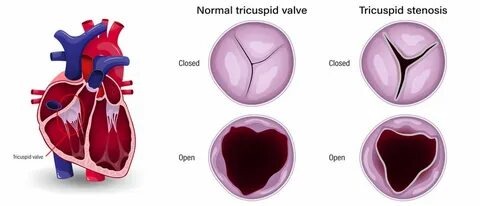Understanding Stenosis: Causes, Symptoms, and Effective Treatments

Strong8k brings an ultra-HD IPTV experience to your living room and your pocket.
Back and neck pain can have many underlying causes, but one of the most overlooked and yet increasingly common culprits is stenosis. This condition can significantly impact your daily life—causing pain, numbness, or weakness—and if left untreated, it may lead to lasting nerve damage.
Stenosis primarily affects the spine, but it can also involve other areas such as arteries and valves. However, in this article, we’ll focus specifically on spinal stenosis—a narrowing of the spaces in your spine that can put pressure on the spinal cord and nerves. Whether you’re experiencing mild symptoms or facing serious mobility limitations, understanding stenosis is the first step toward relief.
Stenosis
Stenosis refers to the abnormal narrowing of a body passage or opening. In most cases related to the spine, stenosis involves the spinal canal or nerve root canals, where space gradually becomes more constricted. This narrowing can be caused by aging, arthritis, bone spurs, thickened ligaments, herniated discs, or injuries.
When the spinal canal narrows, it reduces the space available for nerves. This compression can lead to a wide range of symptoms, such as:
Lower back pain
Neck pain
Numbness or tingling in the arms or legs
Muscle weakness
Balance issues or difficulty walking
Pain that worsens with standing or walking and improves with sitting or leaning forward
Spinal stenosis typically develops over time and most often affects people over the age of 50, although younger individuals may experience it due to congenital issues or injury.
Types of Spinal Stenosis
There are two main types of spinal stenosis, depending on where the narrowing occurs:
1. Cervical Stenosis
This affects the neck portion of the spine. It can cause pain that radiates into the shoulders and arms, as well as numbness, tingling, and even loss of coordination in the hands and fingers.
2. Lumbar Stenosis
The most common form, lumbar stenosis affects the lower back. Symptoms include pain, numbness, or weakness in the legs, especially when standing or walking. Many people find relief when they sit or lean forward, such as when pushing a shopping cart—a classic indicator of lumbar stenosis.
In rare cases, thoracic stenosis may occur, affecting the mid-back, but this is far less common.
What Causes Stenosis?
Stenosis can result from various underlying factors. Understanding the root cause is crucial for determining the most effective treatment plan. Common causes include:
Degenerative arthritis: Age-related wear and tear can lead to osteoarthritis, which produces bone spurs that narrow the spinal canal.
Herniated discs: Discs that bulge or rupture can press against spinal nerves or the cord itself.
Thickened ligaments: The spinal ligaments may stiffen and thicken over time, reducing the space within the spine.
Spinal injuries: Accidents and trauma can lead to dislocations, fractures, or inflammation that narrow the spinal canal.
Congenital spinal stenosis: Some people are born with a naturally narrow spinal canal.
Risk factors for stenosis include age, genetic predisposition, spinal abnormalities like scoliosis, previous spine surgery, and inflammatory conditions like ankylosing spondylitis.
Diagnosing Stenosis
If you’re experiencing symptoms that suggest stenosis, early diagnosis is important to prevent worsening nerve damage. Diagnosis typically begins with a medical history review and a physical exam, followed by imaging tests such as:
X-rays: Help detect bone spurs and disc degeneration.
MRI (Magnetic Resonance Imaging): Offers detailed images of soft tissues, nerves, and the spinal cord.
CT scan with myelogram: Combines CT imaging with a contrast dye to show pressure on the spinal cord or nerves.
These tools allow doctors to pinpoint the exact location and severity of the narrowing, so they can recommend the most effective treatment plan.
Non-Surgical Treatments for Stenosis
Many cases of spinal stenosis can be managed without surgery. Conservative treatments aim to reduce pain and inflammation while improving function. Here are the most common non-invasive approaches:
1. Physical Therapy
Customized exercises strengthen the muscles supporting the spine, improve flexibility, and promote better posture. Therapy can also teach you how to perform daily activities in a spine-friendly way.
2. Medications
Over-the-counter NSAIDs (like ibuprofen and naproxen) help manage inflammation and discomfort. In more severe cases, doctors may prescribe muscle relaxants, antidepressants, or neuropathic pain relievers like gabapentin.
3. Steroid Injections
Epidural corticosteroid injections provide targeted inflammation relief around irritated nerves. Though temporary, they can significantly reduce pain and swelling.
4. Assistive Devices
A cane, walker, or back brace can improve balance and mobility while reducing pressure on affected areas.
5. Lifestyle Modifications
Maintaining a healthy weight, avoiding high-impact activities, and practicing good posture can all slow the progression of stenosis and help control symptoms.
When Surgery Is Needed
If conservative treatment doesn’t relieve your symptoms or if you experience worsening muscle weakness, loss of bladder or bowel control, or significant mobility issues, surgery may be necessary.
The goal of stenosis surgery is to decompress the spinal cord and nerves by creating more space within the spinal canal. Common procedures include:
Laminectomy: Removal of the lamina (the back part of the vertebra) to relieve pressure.
Foraminotomy: Enlarges the foramina (openings where nerves exit the spine).
Discectomy: Removal of a herniated disc pressing on a nerve.
Spinal fusion: In cases where spinal instability is present, this procedure fuses two or more vertebrae together to stabilize the spine.
Minimally invasive surgical techniques are becoming more common, offering reduced recovery times, less scarring, and faster returns to daily life.
Stenosis Surgery
Stenosis surgery is often a highly effective solution for patients who don’t respond to non-surgical treatments. Procedures like laminectomy or spinal decompression provide long-term relief by removing the source of nerve pressure.
In many cases, patients report dramatic improvements in walking ability, leg strength, and pain levels post-surgery. While every surgical procedure carries some risk, advancements in minimally invasive spine surgery have improved outcomes and shortened recovery times. It’s important to work closely with your spine specialist to weigh the risks and benefits based on your health status and the severity of your stenosis.
Tips to Prevent and Manage Spinal Stenosis
While you can’t always prevent spinal stenosis, certain lifestyle choices can help reduce your risk and slow its progression:
Exercise regularly: Strengthen your core and spine-supporting muscles.
Maintain a healthy weight: Excess weight adds stress to the spine.
Practice good posture: Especially when sitting or standing for long periods.
Avoid repetitive strain: Lifting heavy objects improperly can damage spinal structures.
Stay active: Low-impact activities like swimming, walking, or cycling help keep the spine flexible.
Quit smoking: Nicotine impairs blood flow and slows healing of spinal tissues.
A proactive approach can make a big difference in managing stenosis over the long term.
Conclusion
Stenosis—especially spinal stenosis—is a serious condition that can dramatically affect your mobility and comfort. From chronic pain and tingling to loss of function in the limbs, the symptoms can be life-altering. However, with early diagnosis and the right treatment approach, most people can manage their symptoms and return to a more active, pain-free life.
Whether you’re just beginning to experience symptoms or have been living with them for years, it’s essential to explore your treatment options—from physical therapy and medications to stenosis surgery when necessary. Don’t let this condition control your life—take action, seek professional advice, and reclaim your freedom of movement.
Note: IndiBlogHub features both user-submitted and editorial content. We do not verify third-party contributions. Read our Disclaimer and Privacy Policyfor details.







